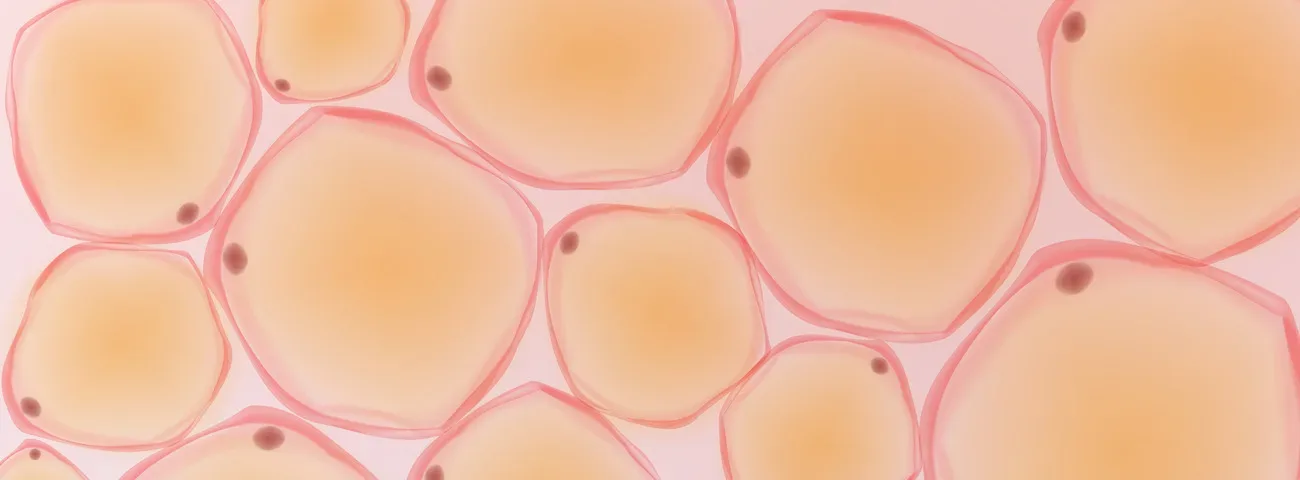Metabolic Syndrome and the Fat Switch
BlueOakNx hosted a panel of distinguished scientists and researchers on November 7, 2024, in Palo Alto, California. The discussion on “Living a Healthful Life – The Next Frontier”, focused on chronic health issues that plague modern society, such as obesity, metabolic syndrome, autoimmune disorders among others.
This article is a transcript of the presentation made by Dr. Richard Johnson, MD, FACP, at the event. Note: The content has been lightly edited for readability and conciseness.
About Dr. Richard Johnson
Dr. Johnson is Professor Emeritus of Medicine Renal Disease & Hypertension at the University of Colorado. He also serves on the Scientific Advisory Board of BlueOakNx. Dr. Johnson has published more than 700 peer-reviewed publications. He is also the author of several best selling and popular books including, Nature Wants Us to Be Fat, The Sugar Fix, The Fat Switch, and Comprehensive Clinical Nephrology.
Metabolic Syndrome is part of Nature
Hi, I am Richard Johnson, I am a physician scientist and I’ve been doing research for a long time, for decades, with the National Institute of Health. I’ve been very interested in the cause of obesity and metabolic diseases including metabolic syndrome – where you’re overweight and your insulin resistance and you have high blood pressure.
Metabolic syndrome is very, very common. Maybe 30% of the adult population has metabolic syndrome. But, what’s really become apparent is that metabolic syndrome is not only common, but it often precedes the development of many, many health conditions like diabetes, high blood pressure, and cardiovascular disease.
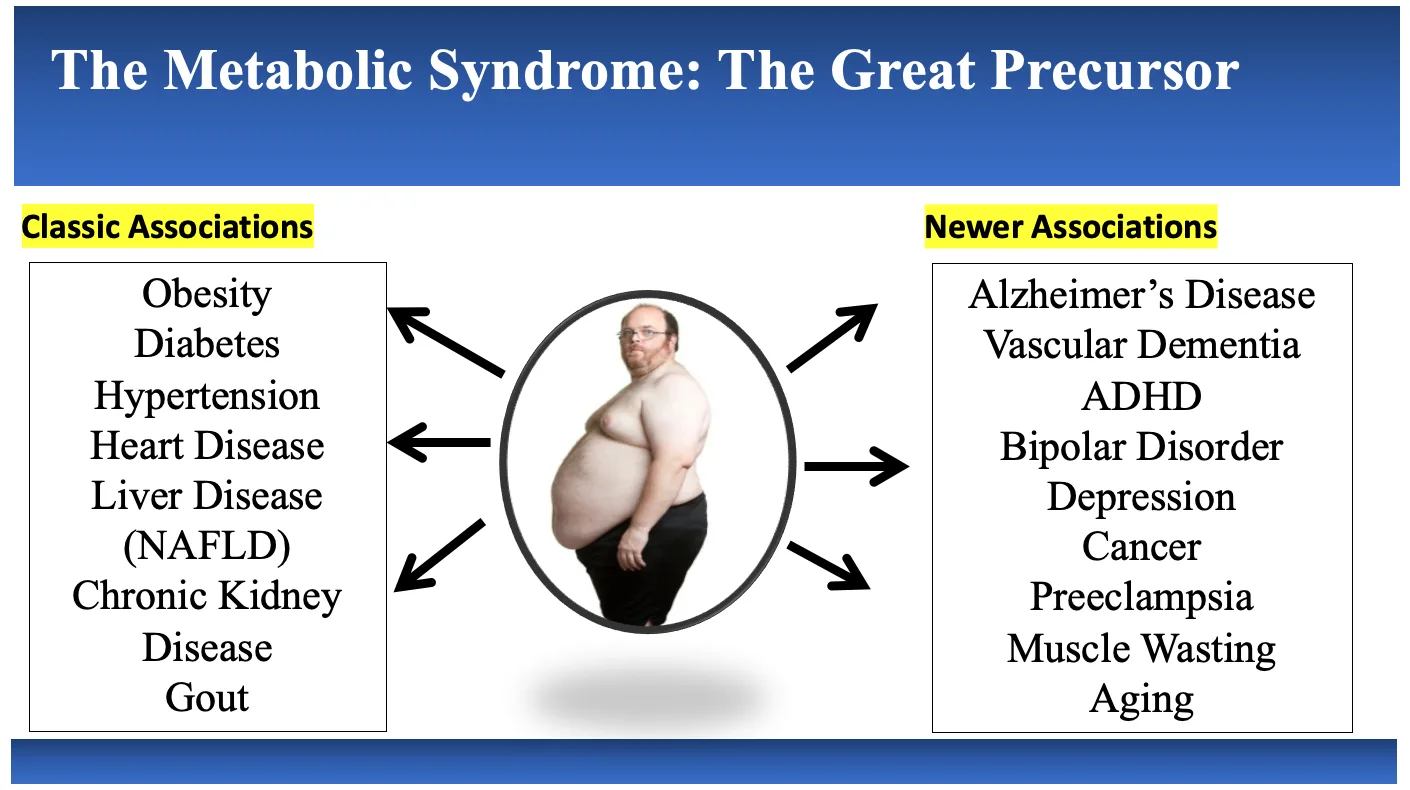
Now it’s becoming more apparent that metabolic syndrome is also linked with behavioral disorders like depression, vascular dementia, Alzheimer’s disease, pre-eclampsia, and muscle wasting that is common as we age.
Actually, the aging process itself is driven by Metabolic Syndrome!
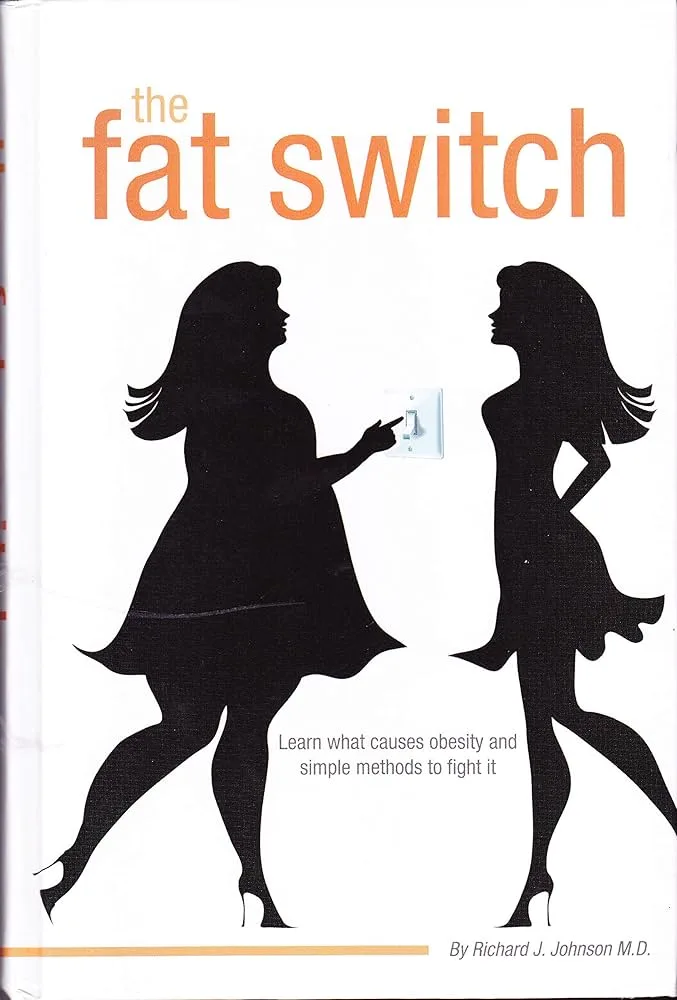
I wrote a book called, The Fat Switch, and one of the approaches we took in figuring out this switch is the fact that many animals will purposely get fat.
For example, the Emperor Penguin gets really fat before it nests, bears get fat before they hibernate, animals that have to go a long distance, for example, migrate, like the Godwit bird, will get fat before they fly.

And it’s very, very specific. They maintain normal weight; they can eat more one day and eat less the next, and then suddenly, about eight weeks before the winter comes, they will suddenly change their whole system to eat twice as much or three times as much as they normally eat. They will drop their basal metabolism, they become insulin resistant, and they develop all the features of metabolic syndrome.
So Metabolic Syndrome is part of nature.
The problem is that we are activating it and we’re not turning it off.
So, the question is what is that and what turns it off?
What we found was that there is one nutrient, only one nutrient that flips the switch. It’s complicated because that nutrient is something not only that you eat, but you can also produce it in your body. And, there are many foods that cause it to be produced.
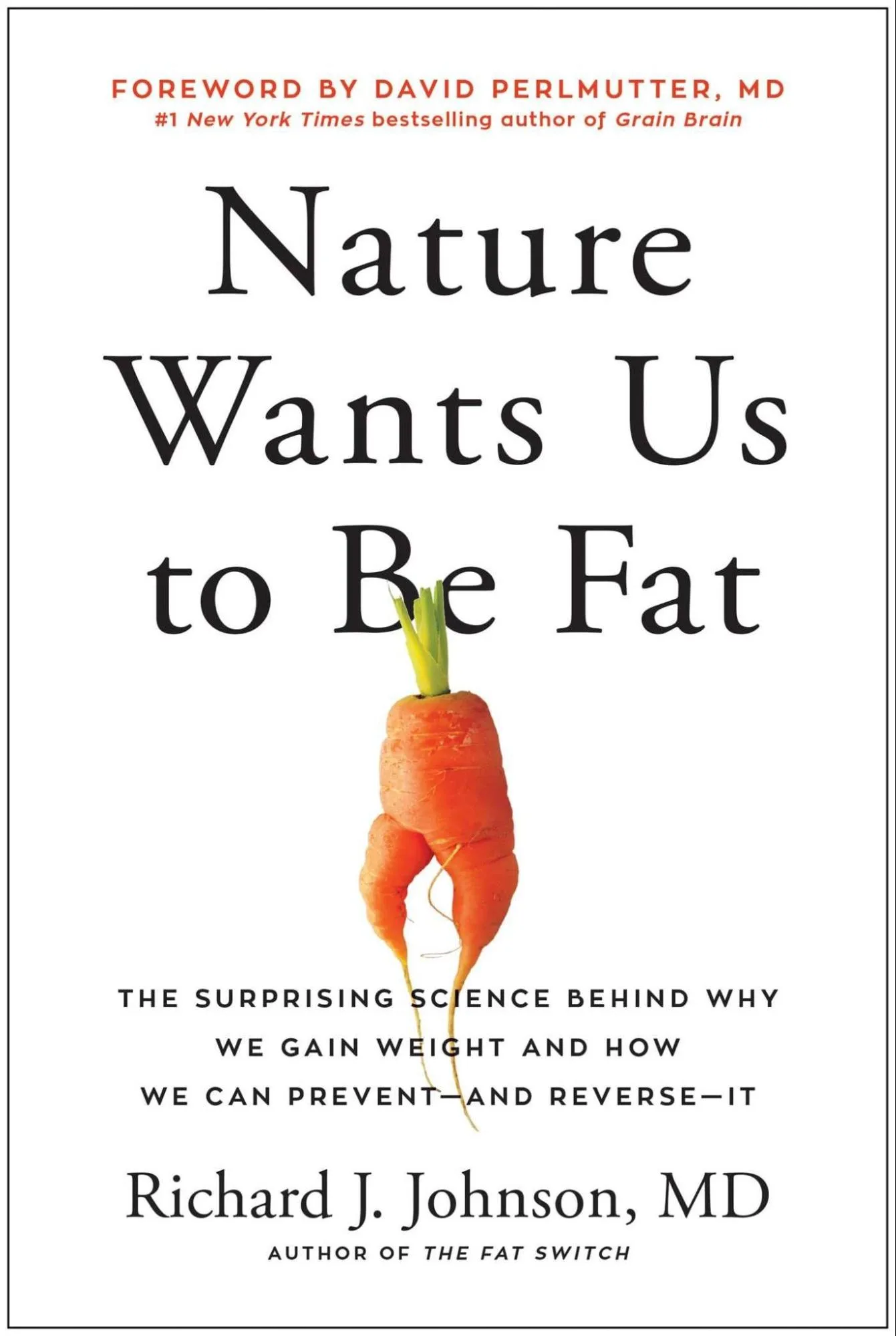
Fructose - The Sugar Fix
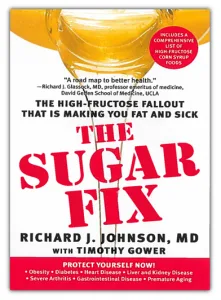
The nutrient is fructose – a sugar. It’s in fruit, which we think of as healthy. But fructose is also in table sugar and high fructose corn syrup.
All the things we love – bread, rice, potatoes, cereals, chips – those things get converted to fructose in the body. There are also other ways you can activate the pathways. I’m not going to go through all those ways, but there are many ways this can happen.
When the fructose is produced, it is metabolized differently from all other nutrients.
The Real Cause of Obesity
Normally, when you eat food, food is a type of energy and you use that food to produce ATP. This is the currency for energy; it is what makes us able to walk, talk, think, dance, everything.
There is active energy (ATP) and stored energy (fat); we used to think that obesity is because we eat too much and the extra energy goes to fat. The world thought this way forever. But, it turns out not to be the way it works.
The science now shows that it’s not this mechanism that drives obesity.
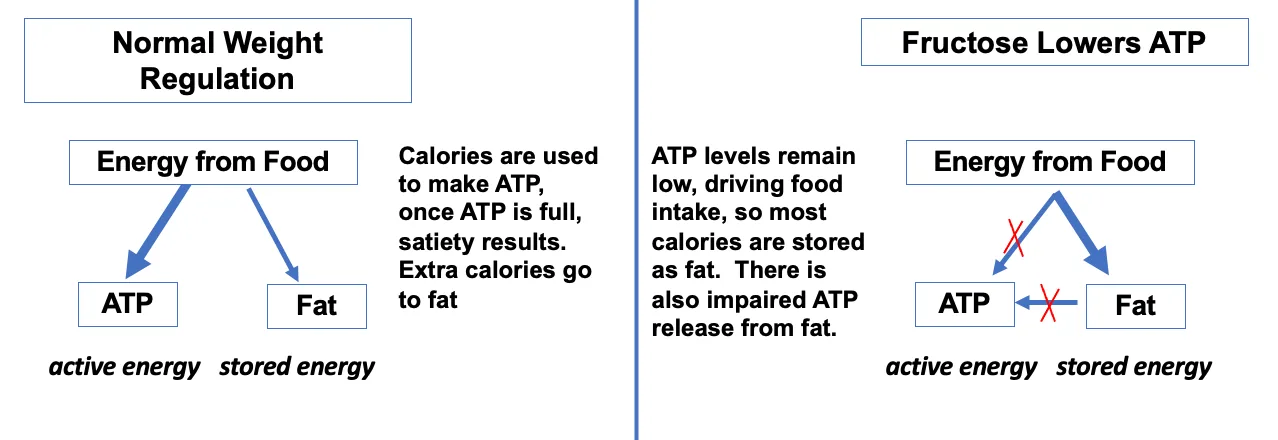
What drives obesity is to trick the body by suppressing the mitochondria by eating fructose and it will actually block the production of ATP. Therefore, there’s less ATP around and instead the energy has to go somewhere and it goes to fat.
Fat and Fatigued
Hence, you are gaining fat in a low energy state because your ATP levels are low. If you take a person with obesity or diabetes and biopsy their muscle, the ATP levels are almost always low. They will also have low energy – this correlates with fatigue.
Fructose causes Foraging
What we’ve found is that fructose causes foraging. It makes you hungry. This has been shown in humans as well. This affects the regulation of food, so you eat more and it drops the energy, the resting metabolism when you’re not foraging because of the suppression of the mitochondria.
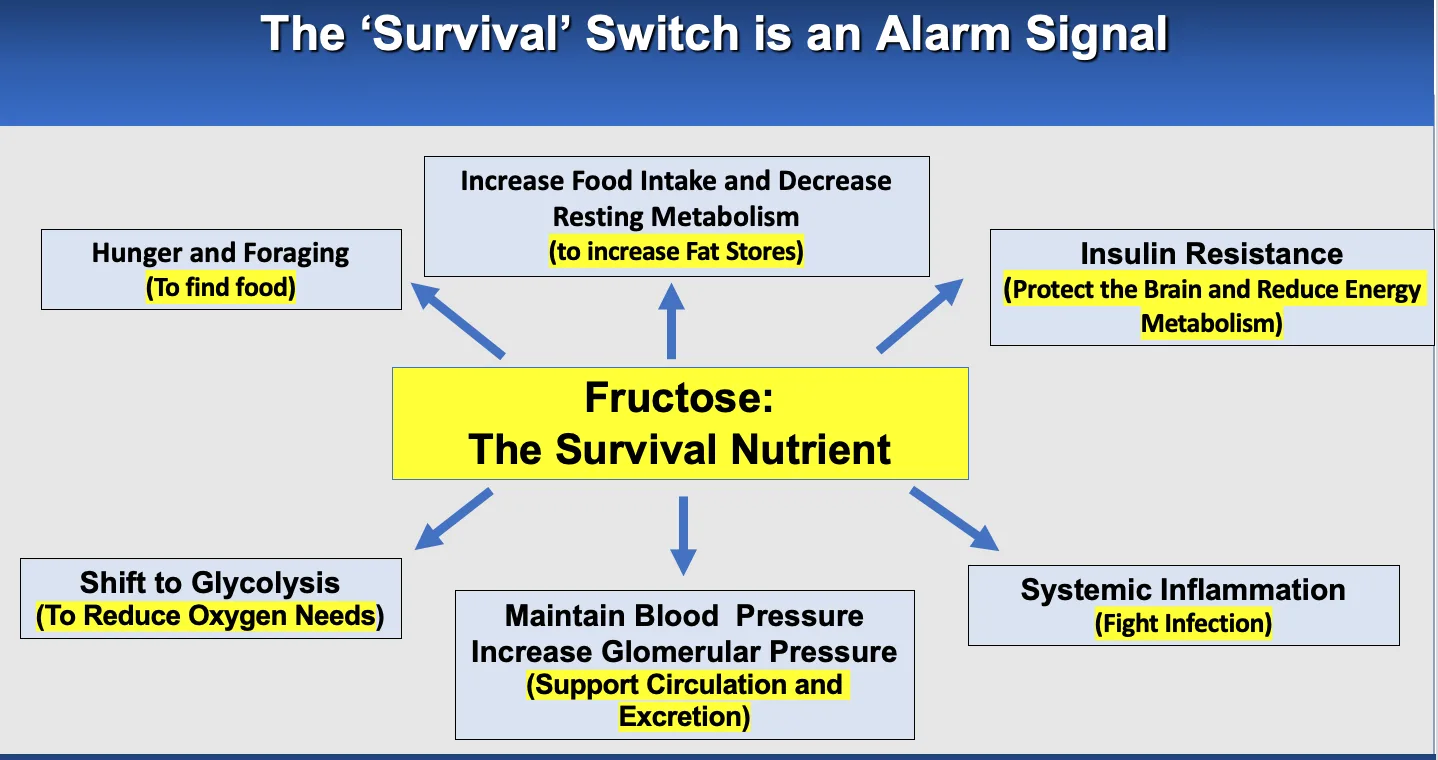
It causes insulin resistance, which allows the glucose levels to go up in the blood and provides energy for the brain in this time when there’s not a lot of food. It can cause low-grade inflammation which is meant to block infections. It also raises the blood pressure which is meant to help circulation.
It is supposed to be a good thing!
It suppresses the mitochondria and reduces the need for oxygen. Some animals will make fructose when they burrow because there’s not much oxygen down there.
Finding this Pathway was the Jackpot
When you overdo it, guess what happens? You get obesity, fatty liver, elevated lipids, diabetes, cardiovascular disease, hypertension, strokes, kidney disease.
It is the jackpot!
Finding this pathway was the jackpot that can cause and drive cancers. It causes dementia and behavioral disorders, causes insulin resistance in the brain, blocks ATP, and causes neuronal death in the brain.
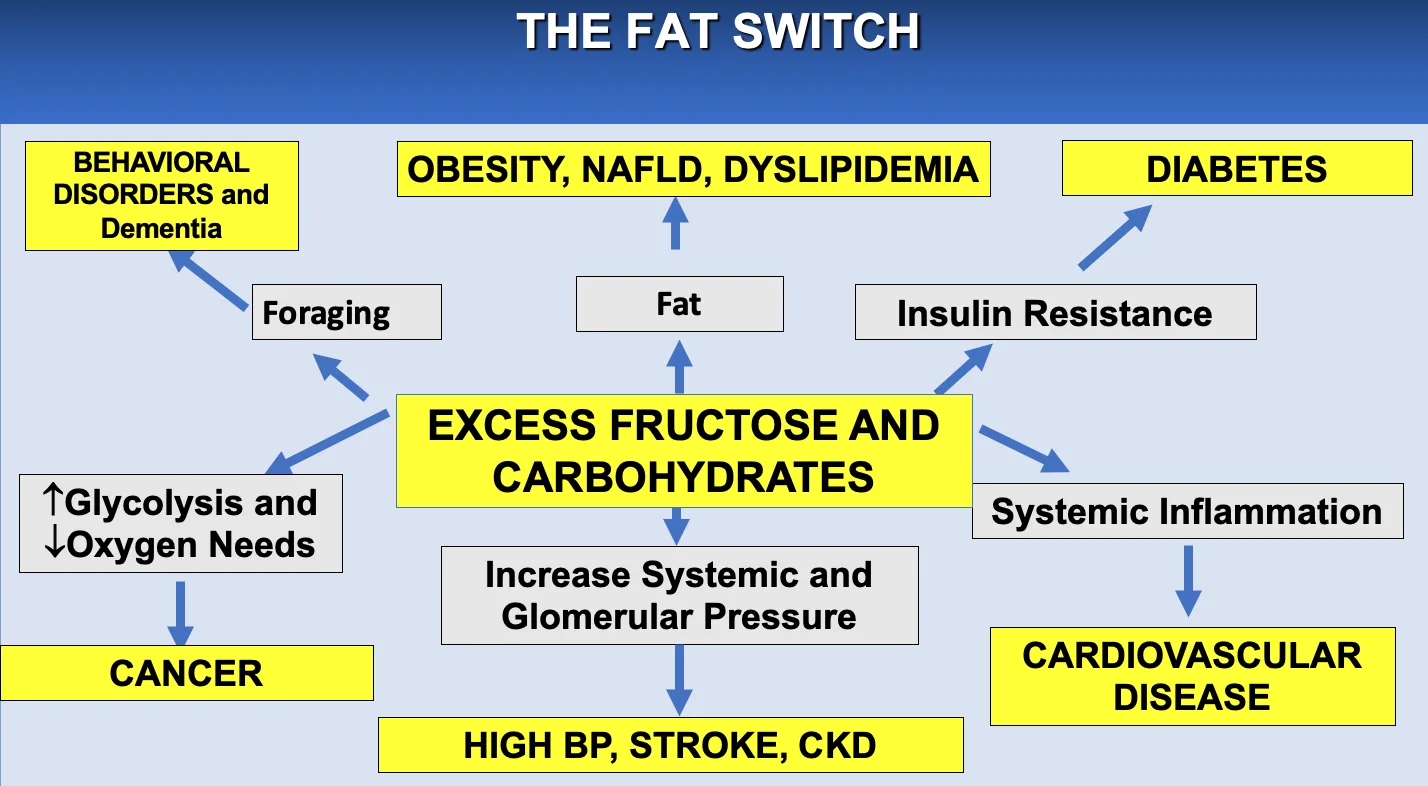
Turning off the Fat Switch
The Fat Switch is a huge pathway. How do you block it? Cut out carbs as much as you can, cut out sugar, and soft drinks. That’s your number one best thing you can do.
Restoring Mitochondria
There is one particular flavanol found in fruit; it’s called epicatechin. Early on, many years ago, Sundeep and Francisco and I started doing experiments where we were giving epicatechin to animals, and we saw it could improve mitochondrial health.
“This is the reason I’m on the board here is because this is a way to restore mitochondria.”
So, it’s not the only antidote, right? The antidote is to block the damage, don’t eat a lot of sugar.
But, it’s a great repair strategy because it blocks some of the injury as well as some of the oxidative stress.



